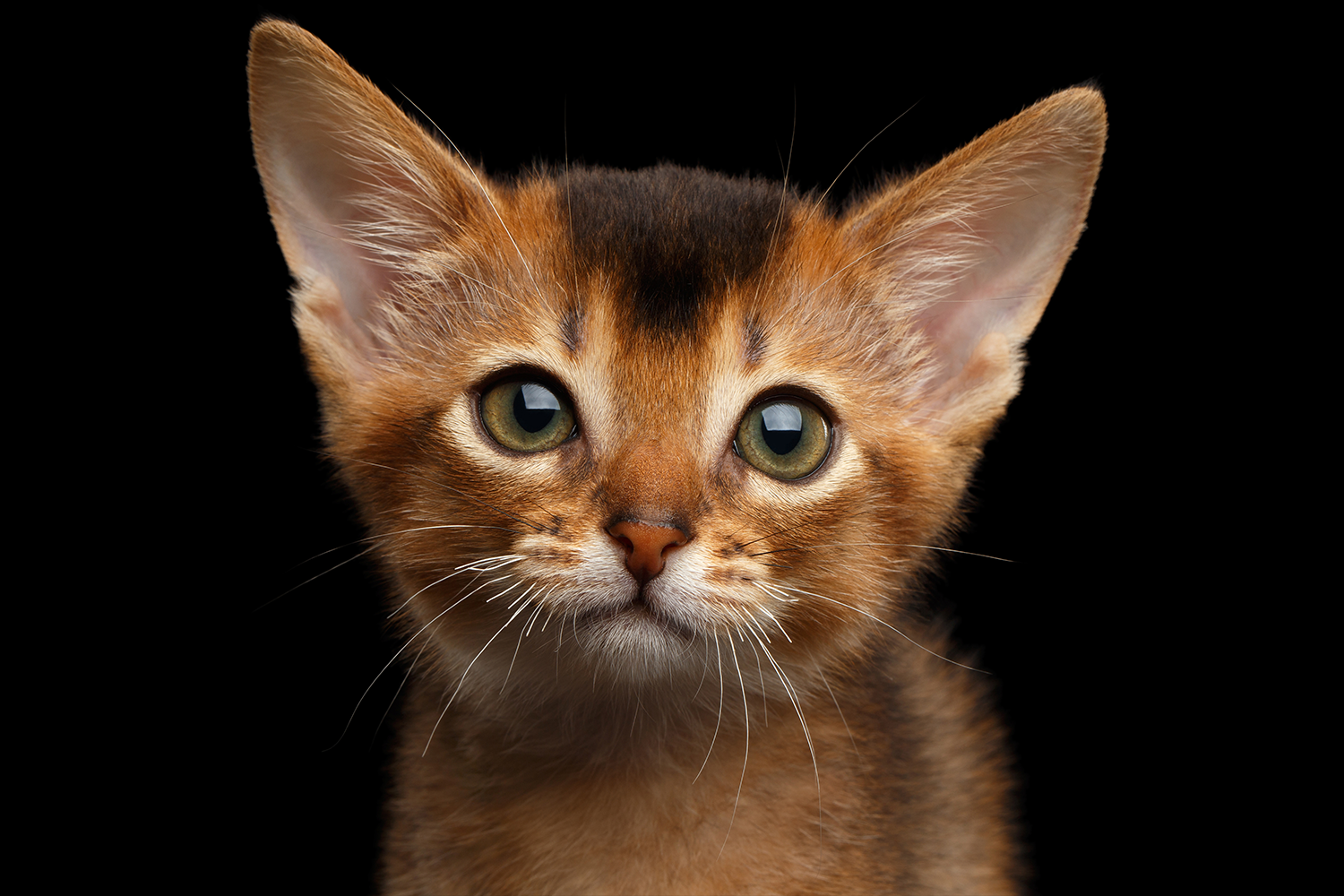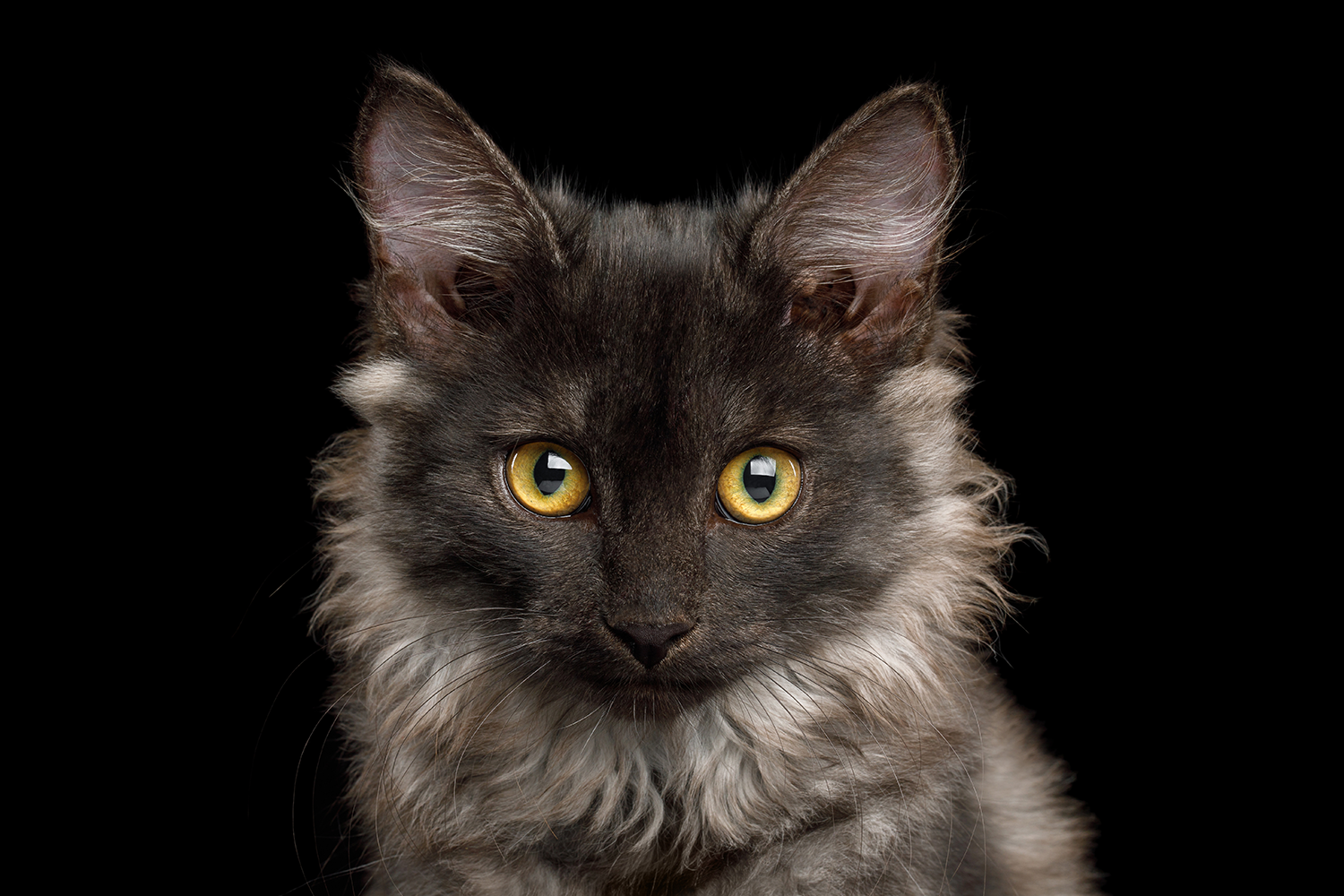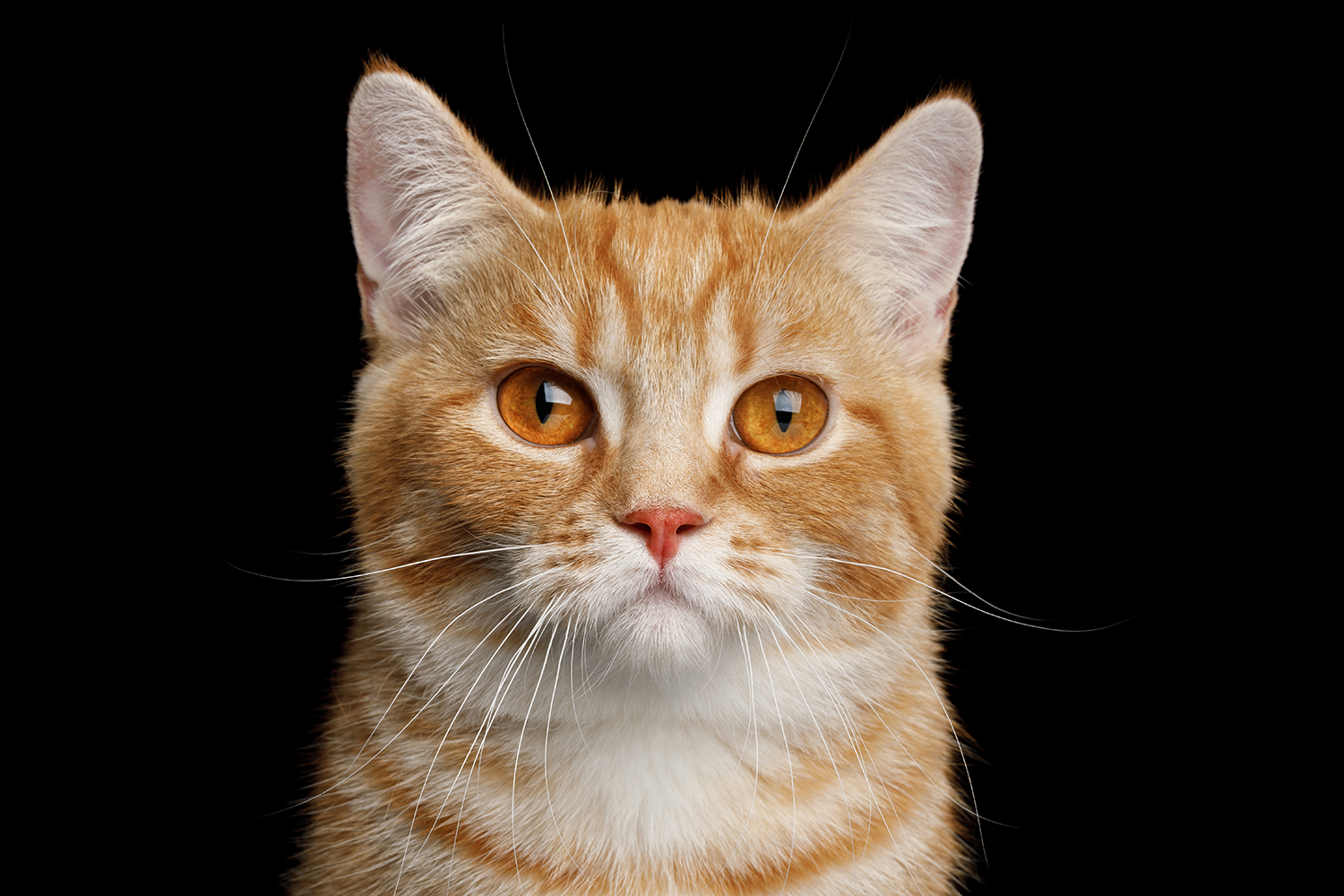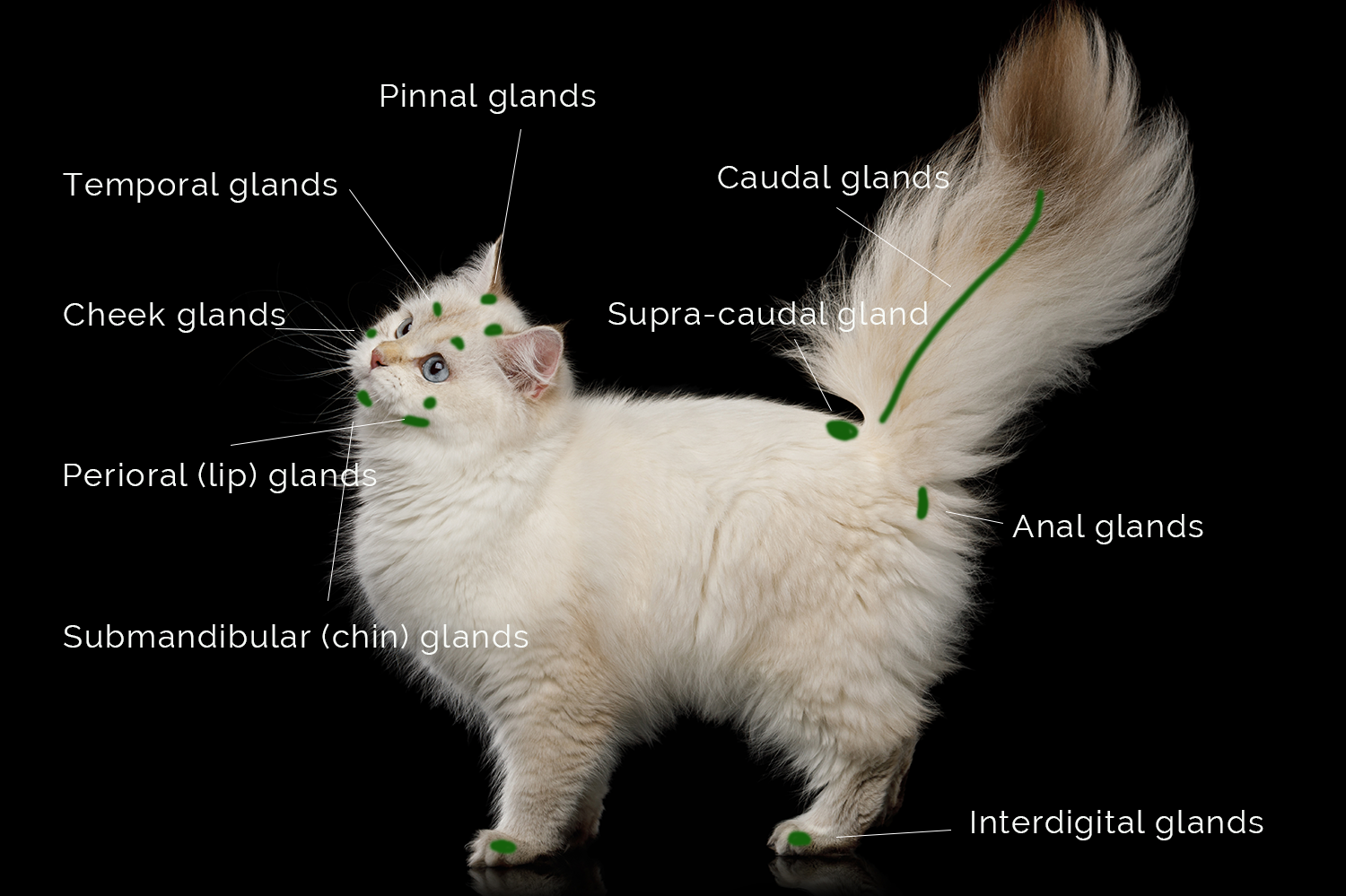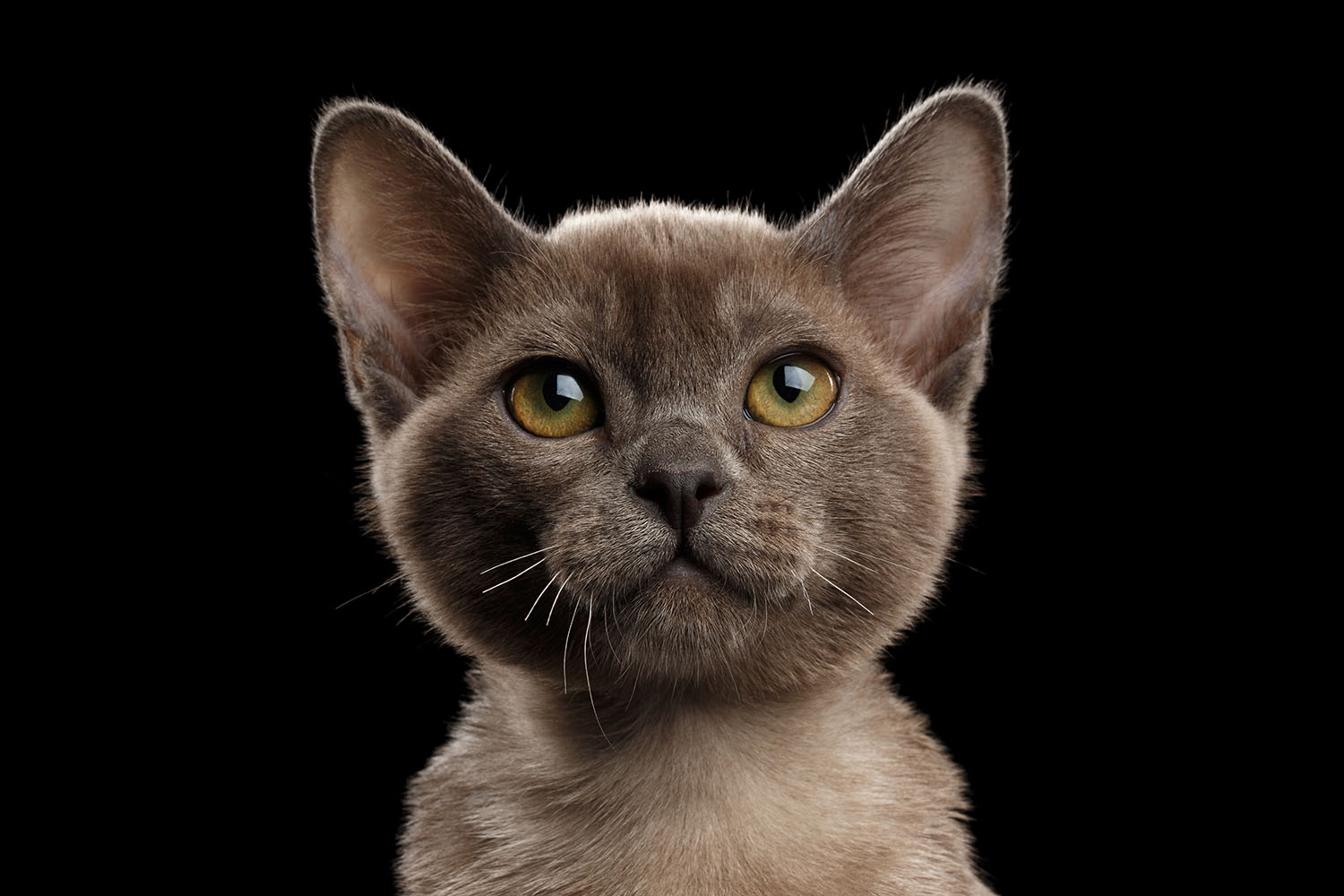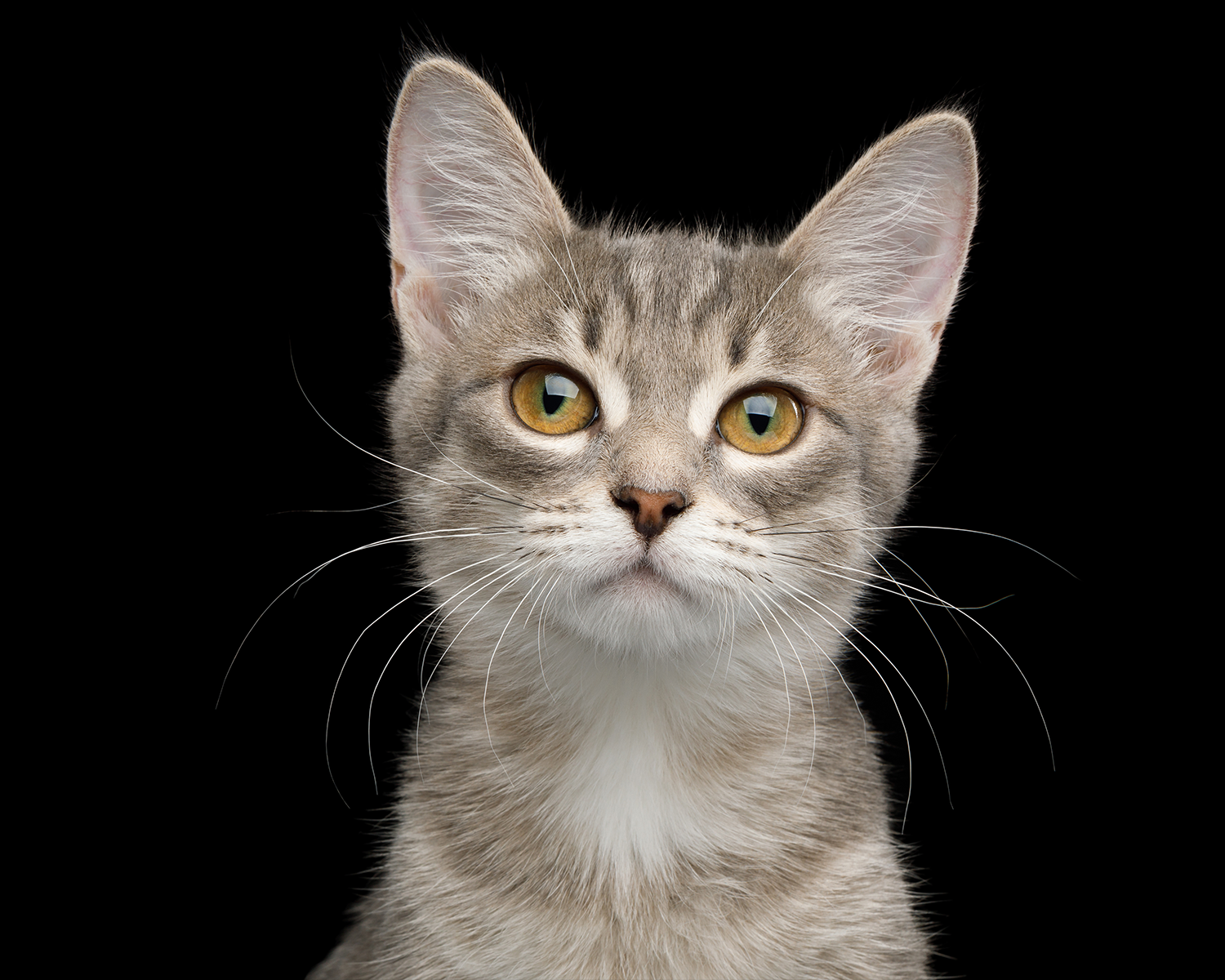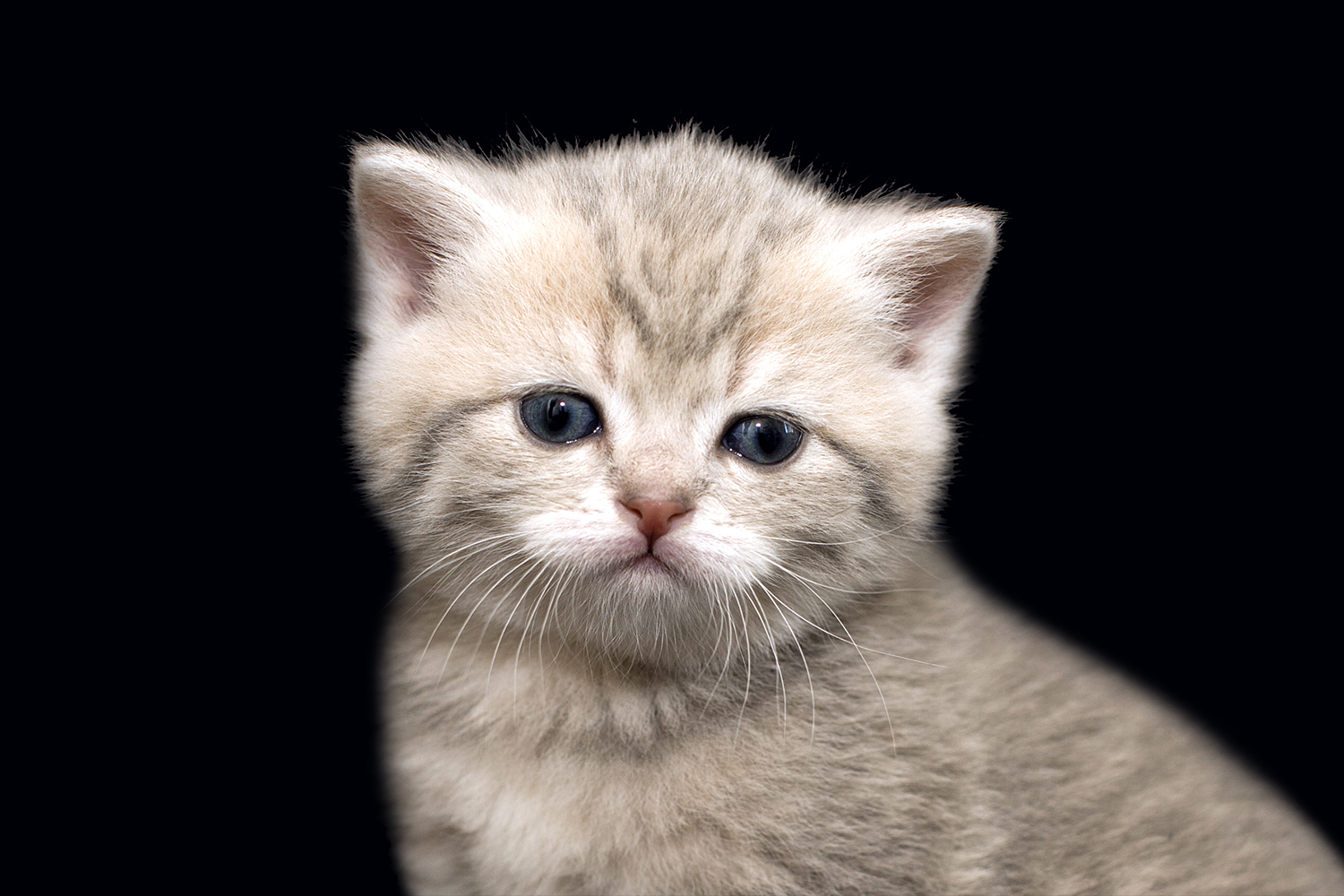There are few things more delightful than watching a kitten play. But it's not all fun and games – you do need to do a bit of work to ensure your kitten grows up healthy and happy
This isn't just for your cat's benefit either. A healthy and happy cat is less likely to do things like pee on your stuff or tear you to shreds when you try a nail trim.
I'm still working on O–U but there's enough here to get you started. Check back soon for more info!
A is for arrival
Before your new kitten arrives, there are a few things you need to get sorted.
A litter tray
Choosing the right tray, litter and location is important for good toilet habits (and for preventing any household dogs from disgracing themselves by eating the contents – yes, that's a thing).
There are lots of different litter tray designs, but basically they are either open or covered. Kittens will usually take to open ones easily – many will have used these before during weaning. The closed ones have some advantages such as added odour control, reduced visibility of soiled litter and increased privacy for your cat. That said, not all cats feel safe in a confined space with only one exit, especially if you've got other pets who sit outside waiting.
Whatever sort of tray you go with, where you put it matters. The tray should be in a quiet, discreet place away from where your cat eats and drinks. Cats tend to prefer to use a tray that's away from doorways and windows so no one can sneak up on them while they're in a vulnerable position.
You can buy so many different sorts of litter: paper, wood, clay, 'fibres'... the list goes on. Some have great smell reducing properties but try to use something similar to the one your kitten was weaned on to at first. While cats have different preferences, research suggests that a litter depth of around 3 cm is ideal.
You need to keep the tray clean. Lots of cats will refuse to use a dirty tray and end up going somewhere else in the house instead. Don't use scented tray liners or litter deodorants as these smells can deter your cat from using the tray. Also don't clean the tray with strong/undiluted disinfectants. Always rinse well.
If you have more than one cat, you need at least one litter tray per cat.
Food and water bowls
Try to stick with ceramic or glass bowls. Plastic ones often give off a smell and can become rough with washing leading to chin irritation. Metal ones are easy to clean but some cats don't like them.
The shape of the bowl depends a bit on the shape of your cat's face. Flat faced cats need a shallow bowl or plate. Some cats are put off if their whiskers touch the sides of the bowl – they may pull their food onto the food before eating it.
Food and water bowls should ideally be separated. Cats don't usually have food and water at the same time and some will not drink water that's near food – they'll source it from other areas such as the shower base, glasses of water, pot plant bases etc. Water bowls should be wide enough for whiskers not to touch the sides and most cats prefer the bowl to be filled to the brim. You will need to clean the bowl and replace with fresh water regularly rather than just topping it up. There are some cats who like to drink running water – you can buy drinking fountains for these guys.
Bedding
Buying special beds is less important than providing safe, warm sleeping locations. Most cats will sleep on any surface if it's warm, sunny and quiet – they may have multiple sleeping spots depending on where the sun comes in during the day.
They often like to sleep in enclosed areas (eg boxes, laundry baskets, under your doona). And they also like sleeping off the ground (eg in drawers, along the back of the couch).
Something to climb
Kittens have a natural urge to climb things. This is not just for fun and adventure but is part of hunting skills practice (ie finding a high spot for observing) and safety (ie getting away from predators). Stairs, curtains, furniture, your legs – all very climbable for a kitten. To save those items, you might want to get a tall scratching post or create some cat-friendly climbing/resting shelves.
B is for behaviour
Understanding cat behaviour is the golden ticket. Once you get it, you and your cat are all set. But there's a lot more to know than most people expect.
In fact, there's so much that it would take over this whole webpage. To solve this, I'm going to point you in the direction of the cat experts and you can dip in and out of the information over time.
Maintenance behaviour
This is the day to day stuff that cats need to do to survive in the wild. All breeds of domestic cat have descended from the African Wildcat. No matter how well fed and pampered, your cat still has the same drives and instincts as its ancestors. If unable to express these, cats can become stressed and frustrated.
The experts at international cat care (icatcare.org) list and describe the following types of maintenance behaviours:
Ingestive behaviour – eating, drinking and chewing
Elimination behaviour – passing urine and faeces
Movement and activity – all the ways your cat moves
Sedentary behaviour – sleeping, stretching and sleeping
Grooming behaviour – all the ways you cat keeps his skin, fur and nails healthy
Investigative behaviour - sniffing, licking and more
Predatory behaviour – all the ways your cat shows off hunting skills
There are other sorts of cat behaviour, such as play, social and marking. We'll cover these elsewhere.
C is for communication
Cats communicate in different ways, and by understanding what your cat is telling you can enhance your bond and avoid issues.
Body language
Cats do a lot of talking through body position, facial expressions, pupil size and puffing up their fur.
You cat's tail will tell you a lot about her mood:
tail straight up usually means your cat's feeling friendly
tail thumping on the ground means 'I'm feeling defensive right now' – this could lead to a flight or fight response
tail held out and slowly moving side to side usually means not 'I'm not happy'... flicking faster tends to me 'Watch out, I'm feeling angry now'
tail puffed up is the next threat level up from tail swishing and aggression is on the cards
tail tucked between the legs means anxiety, fear or submission
You might see all of these tail positions during play when you kitten is exercising her hunting and territory defending skills.
When it comes to body position, an arched back (especially with hackles and tail puffed up) means 'I'm really big, don't try me!' Another defensive position is crouching. When your cat stretches out, it can either mean "I'm feeling relaxed and confident' or 'Come here human, I fancy a wrestle'. If your cats rolls on her back and shows you her belly, she's probably telling you she's feeling friendly and safe with you – but don't take this as in invite for a belly rub! Most cats hate having their tummies tickled.
Ear position is another one to watch out for. When they're held down against the head, your cat is probably expressing fear. Ear held erect and rotated out indicates anger and aggression.
As far as facial expressions go:
dilated pupils tend to signal fear or aggression
half-closed eyes usually indicates feeling contented
whiskers fanning out and point forward means feeling anxious or on high alert
whiskers flattened against the face indicates feeling frightened
touch language
Your cat may also talk to you (or other cats/family pets they have a social bond with) through touch including:
rubbing her body or face against you
grooming you
touching her nose against you (especially your nose if your face is close)
curling up with you
Touch talk overlaps with smell talk (see below) as lots of it involves marking you with scent glands.
Scent language
Cats use smell for communication a lot. Much of it we can't detect because it occurs in the form of chemicals and pheromones produced in scent glands (see pic). Cats will rub these glands on objects and members of their social group to kind of create a comforting, familiar and friendly space. Cats also deposit scent from their feet glands during scratching on surfaces.
While we can't smell what cats are rubbing or scratching, we can unfortunately detect the other smelly things cats use: urine and faeces.
Cat urine contains a couple of unusual chemicals – felinine and isovalthene. When these break down, they give off that real unmistakable pong of cat pee. Entire male cats produce more of these chemical in their wee than do females or neutered males, which is at least one reason tom cat urine is so pungent. (Note that vinegar and water is the best way to clean cat urine)
Unfortunately, lots of cat owners are familiar with the problem of 'inappropriate urination', which means urination outside the litter tray – either on horizontal surfaces (often on things like bags, clothes, rugs) or on vertical surfaces (via spaying). Cats use urine to mark territory and give messages to intruders into their territory.
Cats usually bury their poo, but they can also use unburied faeces to mark territory. Again, this can be a sign of something stressful happening in your cat's territory.
Fortunately, domestic cats use their anal glands much less the wild cousins.
Vocal communication
Cats make a much wider variety of noises than dogs. There are three basic sorts of sounds:
murmuring – these noises are made with the mouth closed and include purring and chirruping or trilling. These are generally happy or contented sounds
miaowing – there are all sorts of miaows meaning all sorts of things. Most miaows are friendly
aggressive/defensive – these noises are generally made with the mouth open and include growling, wailing, spitting, hissing and shrieking. Some cats make these noises but don't follow through with physical aggression, but don't count on this!
D, E and F are for diet, eating and feeding
Diet
Cats are obligate carnivores – they depend on a meat diet to survive and thrive.
Vegetarian and vegan diets are not appropriate for cats. Cats don't have the digestive enzymes or metabolic pathways that convert plants into nutrients. If eating meat is not something you can support, then please don't get a cat.
Although cats need meat, just feeding your cat chicken or beef or fish does not constitute a balanced diet. If you want to do a home-prepared diet, you need to feed the equivalent of about 10 small mammals/birds/reptiles a day – bones, brains, skin, guts and all. There is a website that can help you create balanced home-made diets for cats and dogs, it's called Balance IT. Most of the recipes involve using a supplement (Balance IT have their own, which appears to be able to be imported into Australia, but this could always change).
Most of us cat owners use commercial cat food. Some prefer to feed wet food, some prefer dry, most do a bit of both. All have advantages and disadvantages.
Eating
Your cat's digestive system is still pretty much the same as its ancestor the African Wildcat – it's evolved to handle multiple small meals throughout the day and night (or when prey is active). A typical meal, such as a mouse, contains only around 30 calories and as the average hunter needs around 300 calories a day, that's around 10 meals in 24 hours.
It's most likely that your cat will eat on a schedule that suits you rather than its digestive system (or natural instincts). Typically this will either be two meals a day or food will be left out for grazing. This is not necessarily a bad thing but you need to be aware of the potential pitfalls. These include:
overeating – dry and wet foods are made to be very palatable so cats can end up eating for taste rather than to satisfy hunger
boredom – having to do no work or problem solving to get food can lead to boredom, apathy, anxiety and stress
vomiting – some cats gobble down food and almost immediately chuck it up. This can be due to things like food sensitivity but it can also be related to over-stretching the stomach. A cat's stomach holds around 1–2 tablespoons of food, so eating more that this means the stretch receptors in the stomach fire off and trigger vomiting
Feeding
Now that you know what and how cats eat, it's time to look at ways that we can feed them to meet their needs.
The experts at International Cat Care (icatcare.org) have put together the Five-a-Day Felix feeding plan that mimics the conditions that a cat would usually content with to obtain food.
Here is the full version of the feeding plan
Here is the one page version of the feeding plan
If craft is not your thing and you'd prefer to buy a puzzle feeder. There are lots of different sorts (with various levels of difficulty). Whichever one you choose, it's important to introduce it to your cat properly. In an article called Food puzzles for cats: Feeding for physical and emotional wellbeing published in the Journal of Feline Medicine and Surgery, the following tips were given:
What interests one cat may bore another, so expect to try several puzzles
Introduce the puzzle when the cat is likely to be hungry
If the cat tends to be anxious, introduce the puzzle in a quiet location
Start the cat on a puzzle that is clear and has several openings. At first, getting food from the puzzle shouldn’t be more difficult for the cat than getting food from the bowl, and the puzzle should be at least half full
If the cat isn’t used to having to work for its food, take its food bowl away when introducing the puzzle. However, if the cat becomes stressed by environmental changes, offer the puzzle as a choice next to its bowl instead
If using dry food, place some food on the floor around the puzzle
To increase the cat’s interest in the puzzle, fill it with a novel treat and later switch to its normal food once it becomes more comfortable with the device
If the cat is especially slow to show interest in working for its food, try putting small amounts of dry food in places that will be novel to the cat (eg in its bed, on the windowsill it frequents)
The authors of that paper have created a website that provides lots more info about food puzzles for cats.
The veterinary magazine DVM360 has published an article about keeping puzzle feeders clean.
G is for grass
Following on from feeding, lots of people ask us why their cats eat grass and if it's normal.
Yes! Eating grass is normal behaviour for cats. We don't fully understand why they do it, but we think it's to help move furballs (and perhaps food) through the digestive tract – either up or down!
If your cat doesn't have access to grass outside, it's worth keeping a pot of 'cat grass' available indoors. This will hopefully prevent your cat from eating other plants.
Note that some plants are poisonous for cats. The most dangerous plants are lilies and dumb cane (Dieffenbachia).
Here is a link to the RSPCA list of toxic plants – it has pictures but doesn't have any descriptions of the mechanisms, severity or signs of toxicity.
Here's a link to petMD's list of toxic plants – no pics but more info.
And here's my favourite toxicity resource – the ASPCA, which has both toxic and non-toxic plants and contains pics. Only downside is some American names for plants.
H is for hunting
No matter how much we might have 'domesticated' cats, they retain the natural instinct to hunt. That's actually how cats and humans got together in the first place – people welcomed cats into their homes because of their ability to deal with rats and mice. The best hunters were seen as valuable and the their offspring were sold for large amounts of money.
While well fed domesticated cats tend not to kill and consume prey as much as their wild cousins, their hunting instincts are still triggered by the sight, smell and sound of prey (and cats have amazing sensory abilities). This is why your tubby tabby might finish a bowl of food, disappear for a while and then appear to present you with a live (or partially chewed) mouse, bird, frog, baby possum or lizard. She's probably not sharing her food with you (unless she's seeing you as her kitten!) but feels secure enough in her environment that her food stash won't be stolen.
Once you understand that your cat needs to express hunting behaviour, you need to do two things:
reduce the opportunity to kill native species by keeping your cat indoors or by wearing a collar with a bell or even a catbib
provide toys and games that mimic hunting
If your cat doesn't get to express these behaviours, you can run into problems of frustration, anxiety and even aggression as your cat decides to hunt you!
Zoos Victoria and the RSPCA have teamed up to create Safe Cat, which aims to keep cats and wildlife safe. They have a range of 'cat hacks' to help your cat happy and active.
I is for indoor versus outdoor
Indoor cats tend to live longer than outdoor cats. This is because indoor cats don't get run over by cars, catch diseases, get into fights that can result in infections, get bitten by snakes (yes there are snakes in Elwood) or get locked in other people's garages without food or water. Indoor cats also don't kill our native wildlife.
That said, cats have not been bred for living indoors and they retain the instincts a territorial solitary hunter, which makes indoor cats at risk of psychological and behavioural problems.
Both indoor and outdoor cats spend a lot of time sleeping and grooming. But outdoor cats spend time patrolling and marking territory, climbing, observing, stalking, chasing, catching (and sometimes killing and eating prey). Unless we provide outlets for these behaviours to our indoor cats they can become very inactive/fat and generally stressed. Acute stress is part of life and pretty easy to spot. Chronic stress is more detrimental as the body doesn't have mechanisms to cope well with this.
Signs your cat might be stressed include:
spraying or urinating outside of the litter tray (plus other signs of lower urinary tract disease such as blood in the urine, squatting and straining repeatedly)
hiding, especially if new people, pets or items come into the house
grooming excessively (often making areas of the body bald, especially the belly)
scratching on things more (this is a way of marking territory and helps expend energy)
loss of appetite
miaowing or yowling a lot
being hypervigilant or aggressive
being less playful or interactive
To avoid or solve these problems you need environmental enrichment, which now goes by the fancy name 'multimodal environmental modification' (MEMO). Again, the Safe Cat program has lots of ideas on how to keep your indoor cat happy.
K is for keeping your kitten healthy
Really, this whole thing is about keeping your kitten healthy, because when we keep our cats happy they are less likely to suffer from stress and stress and health are intrinsically linked.
M is for more than one cat
Lots of people ask us about getting a second cat to keep their first cat company. It's entirely possible your first cat won't thank you if you do.
All members of the cat family (except lions) are solitary hunters. Unlike dogs, cats don't form a structured social group that works together for mutual protection, to find food and to raise young. Cats are good at doing it all by themselves. They're not natural friend-seekers. In fact, most cats do what they can to avoid others.
There are exceptions to the solitary cat rule. You might have come across small colonies of farm cats or stray cats that appear to be quite happy in each other's company. These colonies form where there are enough food and other resources (ie they aren't competing with each other) and are usually made up of related females and kittens. They don't work as a pack and continue to be solitary hunters. If resources become scarce, the colony will disband.
Another exception we see is where kittens have been obtained together and raised together in a cat-friendly home (ie one with enough food and environmental resources). Even in this case, the cats may not always be happy with each other. For example, cats that may be happy to curl up together may hiss and growl at each other if confined in a cat carrier. Another common example is cats that share food resources happily at home may fight over food when put into a cattery cage or if you move to a smaller house.
The other main exception is the cat who seeks friendly interaction with other cats. These cats do exist, they're just not that common... and you if want a happy multi-cat household, you need to find more than one.
The most common scenario in the multi-cat household is where each cat carves out their own territory in the house (territories will overlap) and the 'time share' resources. This can work but it can also go wrong when there is some tension between the cats or the resources available within the territory are perceived to be limited or scarce. Cats may then try to avoid conflict by suppressing natural behaviours – this can lead to chronic stress (see signs of stress under I for indoor).
So, the upshot is: all cats are capable of living alone; some cats are capable of happily living with other cats.
International Cat Care has some good tips on multi-cat households.
N is for neutering
If you adopt a kitten or cat from a shelter, neutering will usually have already been done.
If your kitten has come from a breeder, then neutering will be something you need to get done. There are some controversies around the 'right time' to neuter a dog, but when it comes to cats, the situation is pretty clear cut. Kittens can become sexually mature (ie capable of reproducing) from only 4 months of age! Sexual maturity doesn't just bring with it potential of unwanted litters, it also comes with some difficult-to-live-with behaviours.
castrating male cats
Castration involve removing the testes under general anaesthestic. It is a simple procedure with an extremely low risk of problems. Beyond population control, the pros for castration include:
stink reduction – unneutered males will mark their territory by spraying pungent urine (see 'scent language' under C for communication)
fight reduction – unneutered males are much more likely to fight, which can not only be a nuisance (have you heard cat fights during the middle of the night? Sheesh, those are violent!) but also put them at risk of injuries, cat bite infections and feline immunodeficiency virus (FIV)
less aggression – unneutered males are more likely to be aggressive to people than neutered ones
fewer accidents/incidents – due to their drive to roam, unneutered males are more likely to be hit by cats, picked up by councils and simply disappear
Tomcats are just not good to live with.
Spaying female cats
Spay involves removing both ovaries and the uterus under general anaesthetic (ie ovariohysterectomy). When this is done before sexual maturity, it is a minor abdominal procedure with rapid recovery. We spay females not just to reduce unwanted pregnancy, but also to:
stop the nuisance of coming into season. Depending on the time of year your kitten was born, sexual maturity will occur somewhere between 4 and 8 months of age. Cats are 'day-length' breeders, which means the onset of their puberty depends on whether days are getting longer or shorter. If your kitten is reaching sexual maturity in late winter, spring or early summer, she will probably come into season early. Once she comes into season, she will experience cycles of sexual activity every 2–3 weeks until she's been mated. This activity involves howling (known as 'calling'), rolling on the floor, assuming strange positions (head down, bum up, tail to the side), trying to get out... and being extremely annoying!!
eliminate the risk of developing uterine infections and cancers
Once hormones kick in, they override everything else.
O–U is currently being written!
V is for vaccination
Vaccinations help reduce the risk of certain infectious diseases by introducing dead or inactive versions of viruses and/or bacteria to the immune system. The immune system then makes special cells and chemicals that are ready to quickly fight the 'real' infection if encountered.
Many different vaccines have been developed for cats. We can divide these into core vaccines and non-core vaccines. Core vaccines are recommended for every cat. The non-core vaccines needed will depend on where you live, what diseases your pet could be exposed to and your pet's health status.
The core vaccines for cats prevent:
feline parvovirus (also called panleukopaenia virus and infectious enteritis)
feline calicivirus (also called cat flu)
feline herpesvirus (also called cat flu)
While you're probably familiar with cat flu, you might not have heard about feline parvo. It causes a severe and often fatal bloody vomiting and diarrhoea. The virus can live in the environment for a long time and outbreaks do occur in Melbourne. Fortunately, vaccination is highly effective.
Calicivirus and herpesvirus are the main causes of upper respiratory tract infections in cats (cat flu). Cats infected with herpesvirus will usually remain infected for life and often develop recurrent symptoms (eg watery eyes and sneezing). These infections are very common and while vaccination doesn't always prevent infection, it can definitely reduce severity if cat becomes infected with a particularly virulent strain of a virus.
Non-core vaccinations used in Australia include:
Chlamydophilia felis bacteria
feline immunodeficiency virus (FIV)
Chlamydophilia causes conjunctivitis and is mainly used in multi-cat (eg breeding) households. FIV is generally only recommended for outdoor cats as the main method of spread is cat bites.
W is for worms and worming
We generally assume that all kittens have worms and we treat them frequently. We recommend worming:
every 2 weeks until 12 weeks
every month until 6 months
After 6 months, the frequency of regular worming should be tailored to the patient's risk.
We worm (or deworm) kittens frequently because worming products kill adult worms but not all larval stages. So we kill off the adults then wait until the larvae develop into adults and kill those off too.
The most common worms cats get are round worms and tapeworms.
Roundworms
Kittens get a type of roundworm called Toxascaris leonina.
These can be passed from mother cat to baby cat through milk. Adult cats become infected by eating an 'intermediate host' (ie prey infected with worms) or by ingesting worm eggs in the environment.
Sometimes it's really easy to tell that your kitten has roundworms – she might vomit up or poo out what looks like spaghetti! Most of the time though, you can't tell. This is one of the reasons for recommendations about regular worming.
Fortunately, roundworms are pretty easy to get rid of with either a worming tablet or a combined formula that does worms, fleas (and heartworm).
Tapeworms
Tapeworms are white and flat and are made up of lots of segments. These segments break off and you might find them crawling around your kitten's bum or on her bedding or poo. There are a couple of different tapeworms:
Dipylidium caninum, which is called the flea tapeworm because the only way to get this one is by ingesting a flea carrying a tapeworm larva
Taenia taeniaeformis is passed to cat by eating rodents that have eaten tapeworm eggs in the environment
Tapeworms bite into the intestines and suck blood. But the most common tapeworm (the flea one) rarely causes illness – it can cause revulsion if you spot them!
Kittens or indoor adult cats are unlikely to get tapeworms unless they have fleas.
Not all worming products treat tapeworms. Check with us about which product is suitable for your kitten or cat.
If you want more information...

